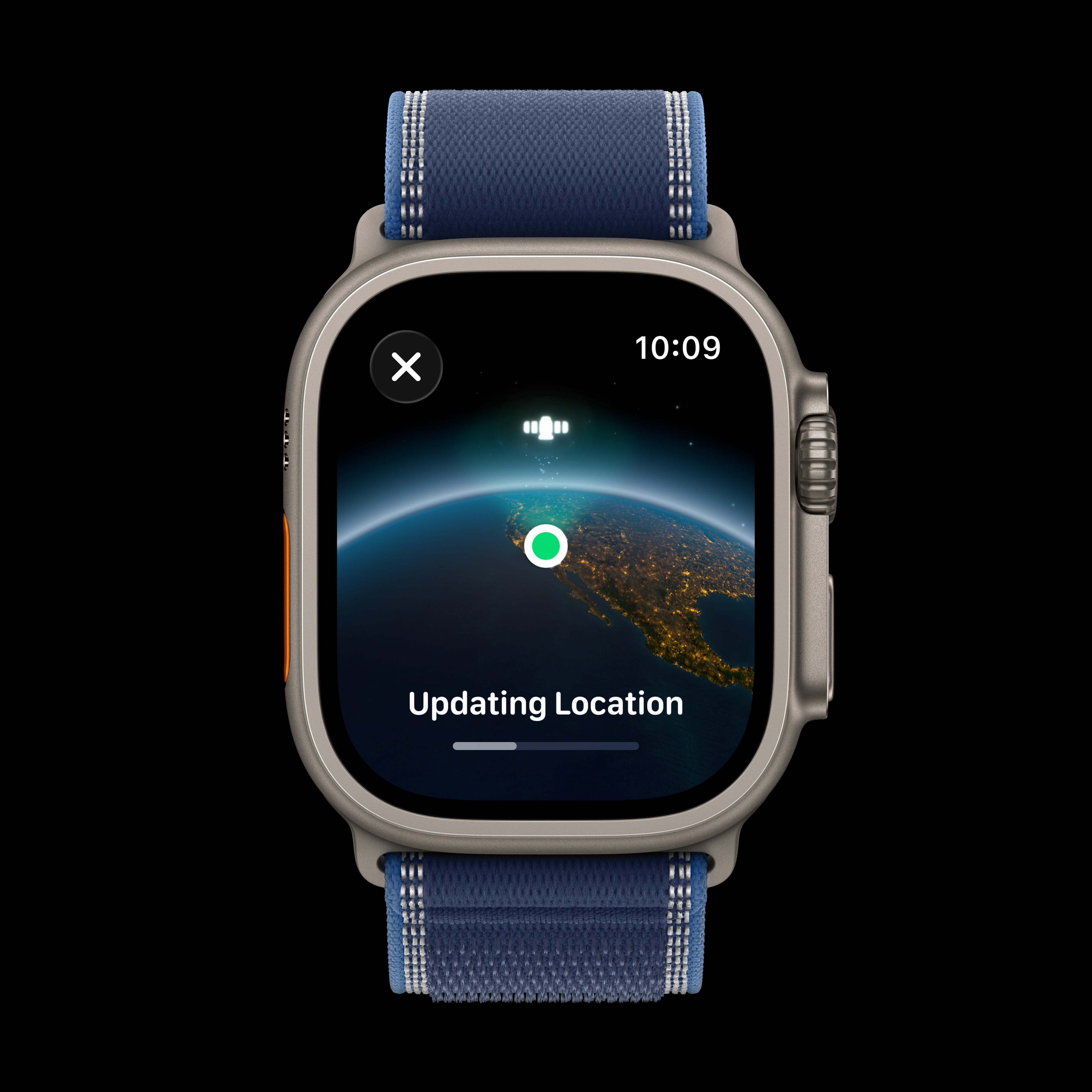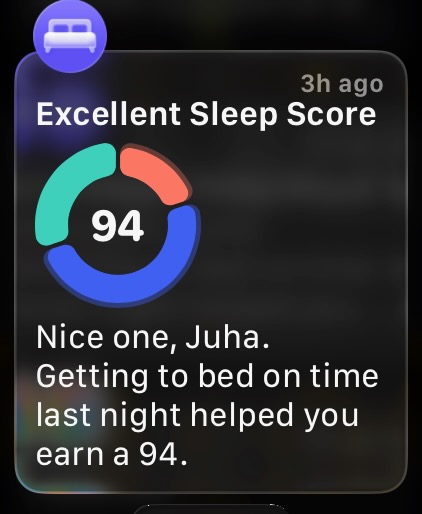
This year, Apple updated the sports-focused Watch Ultra, which is now at version 3. The new watch is priced the same as the older Ultra 2, at $1599 and comes with substantially upgraded hardware that in turn brings new features.
When the first Apple Watch came out a decade ago, I was sceptical that the wrist-worn computer would become a hit as it was expensive, and the hardware wasn’t all that.
But, Apple has honed the tech with each new iteration of the watches, broadening the set of features and functionality to cover fitness, health, notifications, navigation, payments, communications and even act as remote control view a viewer for iPhone cameras.
What does all the tech bring though? Let’s take a look.
Premium Apple design
Apple sent a review sample of the Ultra 3 with the black finish for the titanium case. It is in fact a titanium alloy, with aluminium and vanadium added as per the Grade 5 standard, to make the case more scratch and corrosion resistant, steel-strong yet lightweight. Metallurgy is way above my appallingly low paygrade, but that all sounds impressive.
Its dimensions are: 49 by 44 by 12 millimetres (height x width x depth), and the Watch Ultra 3 weighs 61.8 grams; it’s not slim and lightweight like the regular Apple watches, but I like that aspect of the device. Apple suggests the Watch Ultra 3 fits 130 to 210 mm wrists, and for me, it fits perfectly with a comfortable Ocean Band strap that’s good for splashing around in the water with.
Speaking of oceans, the Ultra 3 is rated at 100 metres water resistance, and good for 40 metres of recreational scuba diving. It’ll automatically switch to underwater mode with a depth gauge and timer, turning off the touch screen in the process, and keep a record of it.
The Ultra 3 is good for swimming as well. Before I tried it out, I didn’t know about “SWOLF” which apparently stands for “swimming golf” and measures your efficiency. Mine’s terrible, and my 15 year old Aquaman kid glides past me like a fish while I slowly thrash around in the water.
In the pool, the Ultra 3 switches to underwater mode, turning off the touch screen until you’ve pressed the Digital Crown to expel water from the speaker cavity using ultrasonic vibrations.
My use of the Ultra is mainly for running. Well, I call it that, and the Ultra 3 provides all the metrics I need here; the key thing though that it stops me from slacking off and slowing down. Not my fault, it’s all the cats in the neighbourhood that come out on my runs, demanding to be patted. Like this furry fellow did:

Apple's added an artificial intelligence "bot" as well, called Workout Buddy, to the watches. Workout Buddy makes encouraging noises, tells you when you've hit certain milestones like distance covered, and so forth. It's not smart enough to go "Juha, don't stop to pat the cat - just keep going for goodness sakes" though.
Moreover, Workout Buddy uses Apple Intelligence AI on a compatible iPhone. That's at least an iPhone 15 Pro, and you need to carry the device with you, which is a real limitation.
On the to-do list: cadence sensors to strap them onto the bike to use with the watch. Would be keen to get some recommendations here.
As an outdoors device, the Ultra 3 also has IP6X dust ingress protection, so it’s pretty rugged overall. It is tested to MIL-STD 810H environmental stress specifications apparently but what that actually means, Apple doesn’t say.
The screen, which is a, wait for it, Low-Temperature Polycrystalline Oxide Organic Light Emitting Diode (LTPO and OLED) unit, is now version 3, always on at 1 Hertz refresh rate, low power and 3000 nits (yes, that’s a unit) brightness at 422 by 514 pixels resolution.
In the Ultra 2, the LTPO2 display was great, but the LTPO3 upgrade has wider viewing angles, higher brightness and it’s… err, brilliant. Really legible in the piercing spring sun.
You can change watch faces but I’ve stuck with the standard modular one that gives easy access to all the Ultra 2 and 3 functions with a quick finger tip tap, and see no reason to change.
Uprated battery life and S10 processor
The excellent people at iFixit have torn apart an Ultra 3 Watch, and found that it has a 2.313 watt-hour battery. That’s up a little from the Ultra 2’s 2.18 Wh battery, but battery life has gone up to 42 hours in normal use, from 36 hours in the Ultra 2.
That’s a solid battery life increase, and it’s helped by the charging speed increase that takes the Ultra 3 to 80 per cent in 45 minutes instead of an hour. Switch to low power mode, and Apple says the Ultra 3 will go for 72 hours.
Long enough, although there are competing smartwatches that last much longer.
The new S10 Apple chipset introduced is one reason why battery life is better, despite increased computing power, in the Ultra 3.
It also brings in a new wrist-flick gesture to dismiss notifications which is more natural than the existing pinch-tap of finger tips one used to control the watch, instead of poking the touch screen.
Otherwise, the watchOS operating system (version 26 required) has just 1 gigabyte of memory to play with, but there’s a goodly 64 GB of storage for music and apps in the Ultra 3, which is unchanged from last year.
Apple’s tuned watchOS well, and the Watch Ultra 3 is very responsive to use.
A big new addition is satellite connectivity in the Ultra 3. This can do emergency SOS, be used for Messages texts, and the find my location tool, over the GlobalStar satellite (no, not SpaceX Starlink).

Along with the very accurate double band L1/L5 global navigation system tech that can pick up signals from multiple satellites like GPS, this is the feature you want for going on “moderate” bush hikes up nearly vertical wet tracks on razor edge mountains in Northland.
If you’re mad enough to do that, the Ultra 3 provides iPhone independence: it supports 5G, another upgrade from the Ultra 2 which is 4G LTE. What’s more, the 5G is RedCap or reduced capability, which means the cellular device doesn’t go full-bore and uses lots of power.
Unfortunately, the telco I’m with doesn’t do eSIMs for wearables yet, but basically, you add one of those to the Ultra 3 and you can leave the iPhone home on runs and other activities. Despite that, you can still answer calls, and respond to texts.
The Ultra 3 has a decent speaker so talking to the watch on your wrist works fine, but a pair of AirPods is a better option here for audio quality, and listening to music as you slip and slide on rain sodden tracks, and nearly tumble down into a frighteningly steep gully.
Wi-Fi is built-in too, and again designed to be power miserly. I saw the Ultra 3 connect to my access points on 5 GHZ, using just 0.1 megabits per second of bandwidth, and dropped out whenever it could.
More health features
There are some new health features in the Ultra 3, that I am pleased to say I didn’t have a reason to try out. They include sleep apnoea and hypertension detection - the Ultra 3 can’t take your blood pressure though; for that you need a proper cuff.
The heart rate monitoring is still there, including a single-lead electrocardiogram, and arrhythmia detection, blood oxygen level monitoring, temperature sensing and cycle tracking. Health data is really sensitive stuff, and it doesn’t leave your watch and iPhone, as per Apple’s commitment to strong privacy.
Apple has also added a new sleep tracking feature. You now get a sleep score, like so:

I think sleeping is my favourite sport, and I try to maintain a high score in it at all times. The sleep score screen lets you drill down into different areas such as sleep duration, bedtime and interruptions, with weighted sub-scores for each. Not a killer feature, but nice to have.
The one Watch Ultra to rule them all
Cutting to the chase, the Ultra watches are my favourites Apple watches. Not because they’re top of the line models, but their bigger size and longer battery life add quite a bit compared to the regular watches, in my opinion.
In fact, I’d say the Ultra 3 offers decent value. Nothing much that Apple makes is cheap and cheerful as such, but bear with me. A watch is one of those devices that you want to hang on to for a while, and the Ultra 3 has the legs to go the distance.
Once you add the options to make the Series 11 comparable to the Ultra 3, like the titanium case option instead of aluminium, more scratch resistant sapphire glass, and a bigger 46 mm case, the price goes up to $1399.
You get a slimmer, lighter Apple watch with the Series 11, but miss out on longer battery life, more accurate GPS, and satellite connectivity. There’s no customisable action button either on the non-ultra watches, offering a quick shortcut to workouts (I use this every day) and other features like dropping waypoints for backtracking when you’re out getting lost white hiking.
The biggest issue I have with the Ultra 3 (and had with Ultra 2) is on the software side. In some cases, the data gathered is spread across multiple apps, like fitness and health. Furthermore, there’s a lot of different types of information, and you can get lost trying to find a particular set of data.
If you have the budget for it (and a companion iPhone), the Ultra 3 is an excellent sports smartwatch and personal health monitor, with just about all the features and functionality anyone will need to keep active.
2 Comments
Awhile ago I bought a Samsung smart watch thinking it would enhance my training however I don't use it anymore. As I was also carrying my phone with me for entertainment purposes I realised that the phone could do most things. Actually just tracking my distance/steps was all I really required and the phone did that. Heart rate tracking on the watch was kind of cool but also unreliable.
As for a watch, these things are not all that necessary these days, however, they still go well with business clothes. The only pure watch I have is a Casio A158W which I bought for $22 (half price) at the Warehouse a few years ago. A classic and elegant timepiece that's great for business as it slips nicely under a shirt cuff. Unlike the clunky Samsung. I love my Casio.
The Casio A158W is a classic model and will probably last forever.
I have a slightly chunkier Casio but it probably only cost around $150. Batteries last 10 years and it tells the time which is all I need.
Nowadays I'm trying to get away from screens as much as possible, so I don't really want my wrist beeping and brining me intrusive notifications.

We welcome your comments below. If you are not already registered, please register to comment
Remember we welcome robust, respectful and insightful debate. We don't welcome abusive or defamatory comments and will de-register those repeatedly making such comments. Our current comment policy is here.